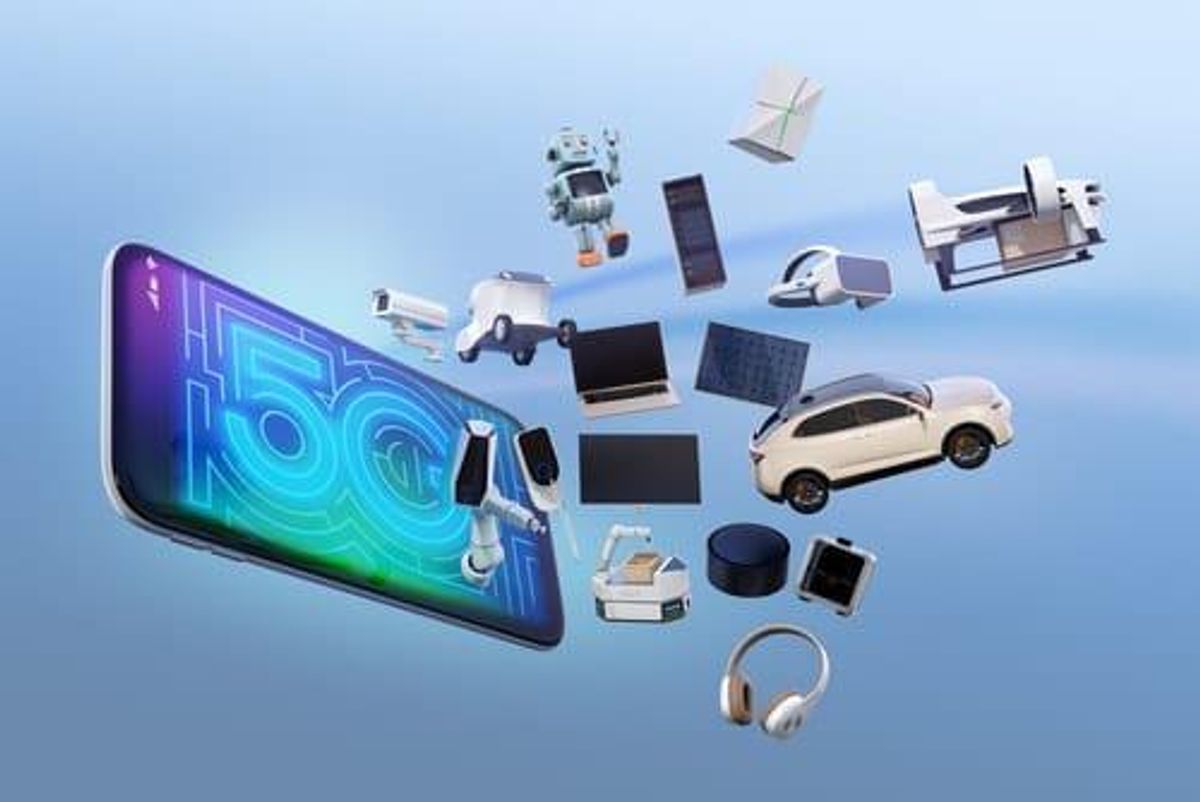
2019 will be a crucial year for the mobile web outlook as major telecommunications carriers unveil new products and services.
With 2018 setting the stage for the 5G network, 2019 will be a crucial year for the mobile web sector as major telecommunications carriers unveil products and services in new areas.
As noted in our 2018 mobile web trends article, the current bans on Huawei have come at a time when several cellular operators across the world are in the advanced stages of rolling out their 5G networks. Some of these operators have stated that Huawei is the “only true 5G supplier.”
Heading into 2019, the Investing News Network (INN) is taking a look at the year ahead for the mobile web outlook, with insight from industry analysts and companies in the space.
Mobile web outlook 2019: 5G is on its way
Jeff Gudewicz, chief product officer at Wilson Electronics, told INN that the 5G network is “on its way,” but said that it will take awhile for the world to completely switch over to the next-generation network.
5G, the fifth generation of cellular mobile communications, is tipped to provide higher data speeds and will have the capacity to handle devices that make up the Internet of Things (IoT). 5G technology is considered a shift from the current generation of technologies like 4G, 3G and 2G networks.
“As 5G networks begin to densify in the coming year, they will be built alongside today’s 4G LTE network and function in tandem with it,” Gudewicz told INN in an email statement. “This existing 4G layer is very important, and will continue to act as the fallback network for 5G well into 2030.”
Major US cellular operators in the next 12-month period are set to either unveil new products or, in some cases, the actual 5G service itself; for example, AT&T (NYSE:T) has already launched it in limited areas.
In late December, the company announced that its 5G network was live in select areas of 12 cities across the US. It will be deploying the service in seven additional cities in the first half of 2019.
Meanwhile, Verizon (NYSE:VZ), which initially launched the service to an area of Houston in October, is planning a larger rollout in “early 2019.” However, the company hasn’t issued a specific timeline for when it will be available.
Likewise, Sprint (NYSE:S) said that 5G service will be initially rolled out in nine cities in the “first half of 2019,” while T-Mobile (NASDAQ:TMUS) is set to launch the service nationwide in 2020.
Gudewicz said that consumers will have the option of switching to 5G from their WiFi connections for their internet needs.
“With this [launch of 5G] comes new capabilities for wireless applications, including increased adoption of wireless TV and more,” he said. “As more and more people make the switch from WiFi to 5G, cellular signal boosters will become increasingly important in areas with poor cellular signal.”
Further, Gudewicz said that the deployment of the 5G tech will lead to a new dimension of cellular usage.
“We will also see a host of new IoT applications related to 5G, as well as the beginnings of cellular addressing more than just traditional voice and data needs,” he said.
While the Trump administration is considering issuing an executive order to ban the purchase of Huawei and ZTE (SZSE:000063) equipment, cellular operators in the US have already been using equipment from European manufacturers.
AT&T, for example, has announced Ericsson (NASDAQ:ERIC), Nokia (HEL:NOKIA) and Samsung (KRX:005930) as its technology partners for building its 5G network. Similarly, Verizon has awarded a contract to Ericsson for building and deploying its 5G network, while T-Mobile has inked deals with both Ericsson and Nokia for building its 5G network.
It should be noted that both Huawei and ZTE have faced some restrictions in the US for few months now, with the Federal Communications Commission barring companies that receive subsidies from procuring equipment.
Mobile web outlook 2019: Huawei’s impact
Unlike operators in the US, cellular operators in other countries do not have restrictions regarding access to Huawei’s equipment. Thus, the core network of operators in these countries are based on Huawei.
Huawei is a preferred choice for many operators across the world as the company has 1,600 5G patents and accounts for 19 percent of the entire 5G ETSI standard, which caters to the needs of interconnection and interoperability.
In November and December, many countries, including Australia, New Zealand and Japan, banned Huawei’s equipment. Meanwhile, BT Group (LSE:BT.A) in Britain announced that it will scale down the use of Huawei’s equipment from its core network.
BT has often been vocal about Huawei, with the two companies in June announcing a partnership for pioneering 5G tech. In November, Neil McRae, chief architect of Britain’s BT Group, reportedly said at an event that Huawei is “the only true 5G supplier,” and that other suppliers “need to learn from Huawei.”
BT Group’s EE mobile network is scheduled to launch 5G in 2019, with the company stating that the rollout will be done in 16 cities in UK.
Meanwhile, Dan Lloyd, chief strategy officer of Vodafone Australia, has warned of investment “uncertainty” following Australia’s decision to ban Huawei’s equipment.
“This decision is a significant change which fundamentally undermines Australia’s 5G future, and we will consider what it means for our business,” Lloyd told Australian media.
In December, Vodafone Australia, part of Vodafone (LSE:VOD), acquired spectrum worth AU$263 million for its 5G network, stating that “5G is another step closer.” Vodafone Australia is scheduled to launch 5G in next “few years,” though the company has not shared any specific timeline for the rollout.
Spark New Zealand (NZE:SPK), an operator that filed a proposal for deploying Huawei 5G equipment with New Zealand’s Government Communications Security Bureau (GCSB), said that the company is disappointed with the result. In a release, Spark said that GCSB informed the company that the use of Huawei’s equipment would raise significant national security risks.
“While we are disappointed with this decision, we are confident that the decision will not affect our plans to launch Spark’s 5G network by 1 July 2020, subject to the necessary spectrum being made available by the New Zealand Government,” the company said.
While it remains to be seen if the rollout of 5G in these countries will be per the projected timelines, and if costs can be contained, Huawei has said that the difficulties will not stop it from moving forward.
Huawei has signed commercial contracts for 5G with 26 companies, and had shipped in excess of 10,000 5G stations at the end of 2018. Guo Ping, the company’s rotating chairman, said in a new year address to employees that 2018 was an “extremely uneasy year.”
“Some 5G markets without Huawei’s participation, like an NBA game without a star, can’t reach the highest level of technology,” Ping said.
In a separate outlook for 2018, the company highlighted how it has taken part in several 5G testing sites across the world.
“The test data shows that Huawei’s current technology maturity is at least 12 months to 18 months ahead of other companies in the industry,” the company noted.
GSMA Research, the research body of GSM Association, has forecasted that there will be 1.4 billion connections by 2025 and that 5G services will be commercially available in 48 markets by end of 2020.
Mobile web outlook 2019: VR and AR to grow
One of the subverticals of the mobile web sector that is set to grow with the aid of 5G is the augmented reality (AR) and virtual reality (VR) market, which is forecast to witness a compound annual growth rate of 73.3 percent between 2018 and 2025. Market Research Future states in a report the segment will cross a valuation of US$767.67 billion by the end of 2025.
Daniel Japiassu, CEO of YDreams Global Interactive Technologies (TSXV:YD), said that it will focus on eSports and VR.
“YDreams Global will continue to focus on the sale of Arkave VR arenas with a focus on family entertainment centers and theme parks,” Japiassu told INN in an email statement. “These segments are very hot and the demand for VR experiences will continue to grow.”
In terms of its presence in eSports, Japiassu said that YDreams has several initiatives for 2019.
“We will also increase our presence in eSports. It’s an industry that we see as a great opportunity to leverage our expertise into one of the fastest-growing entertainment markets in the world,” he said.
Japiassu said that YDreams has been working with other “major companies.”
“Some negotiations have taken most of the year and we hope to surprise the market yet in 2018 and start 2019 stronger than ever,” he said. “The future looks brighter than ever.”
Mobile web outlook 2019: Investor takeaway
With 5G technology set to be commercially deployed in the next 12-month period, it remains to be seen how operators overcome hurdles in deploying the next-generation network.
While Huawei’s ban will certainly play a role in the rollout of 5G owing to the company’s patents, other European manufacturers will look to extend their market share. The massive growth that is forecasted for the technology and other subverticals means companies and investors involved in the space could be set to enjoy huge gains.
Don’t forget to follow us @INN_Technology or real time updates!
Securities Disclosure: I, Bala Yogesh, hold no direct investment interest in any company mentioned in this article.
Editorial Disclosure: YDreams Global Interactive Technologies is a client of the Investing News Network. This article is not paid-for content.
The Investing News Network does not guarantee the accuracy or thoroughness of the information reported in the interviews it conducts. The opinions expressed in these interviews do not reflect the opinions of the Investing News Network and do not constitute investment advice. All readers are encouraged to perform their own due diligence.
